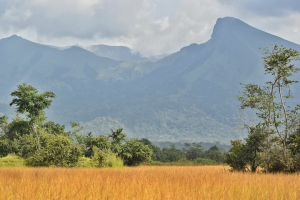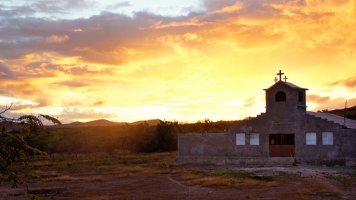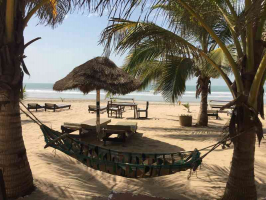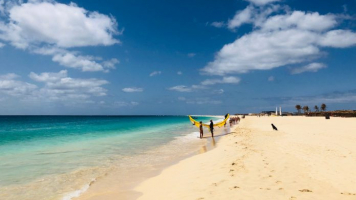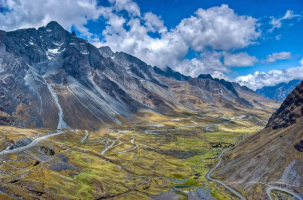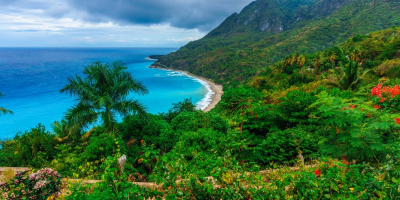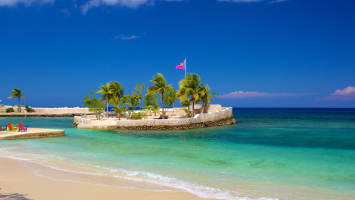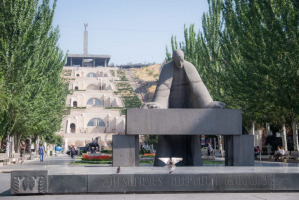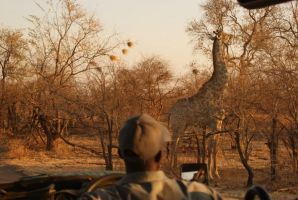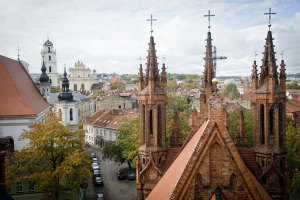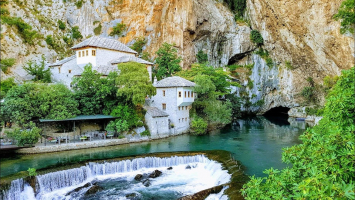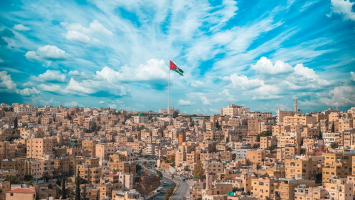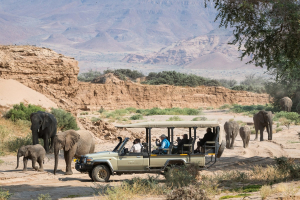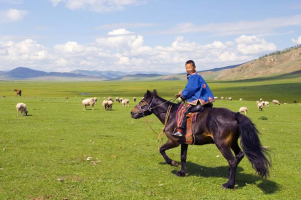Top 10 Best Travel Destinations in Tunisia
Tunisia was Rome's breadbasket, and the Romans' cultural legacies are more than enough motivation to pay a visit. This North African country welcomes you if ... read more...you are looking for a different adventure! Read on to see the top attractions of Tunisia.
-
The massive Roman El Djem Amphitheater dwarfs the current village around it. El Djem Amphitheater remarkably well-preserved Roman relic is Tunisia's top tourist attraction, one of the most popular day-trip destinations from the coast, and one of the greatest examples of amphitheater design still surviving in the world. The fortifications' massive weight serves as a reminder of Rome's once-dominant grasp on North Africa.
You may still wander through the arena's halls like the gladiators did. Alternatively, Let's ascend to the upper tiers of the seating tiers and gaze out over the arena, envisioning the fights that took place below.
• Location: Musée, El Jem 5160, Tunisia
• Timing: 7AM - 7PM
• Famous for: In Africa, there is an amazing testament of Roman architecture, particularly structures erected for spectator events
• Entry Fee: US$ 2.71
• Best Time To Visit: Spring (March to June) and fall (September to October), on the other hand, offer much milder temperatures than summer, making your visit a bit more pleasurable.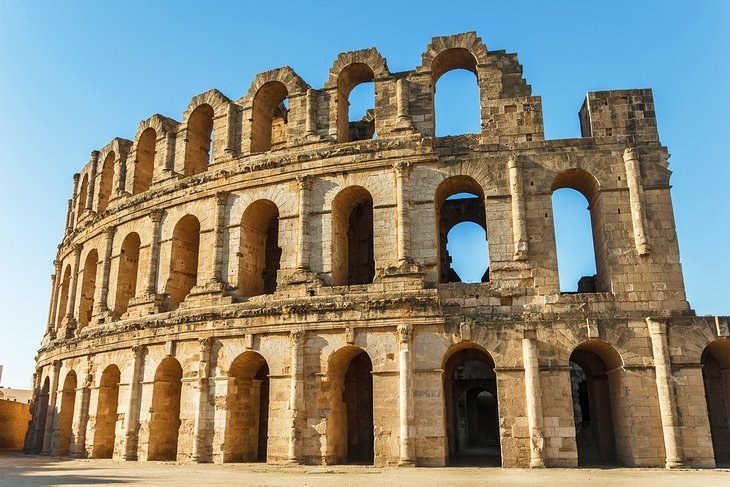
https://www.planetware.com/ 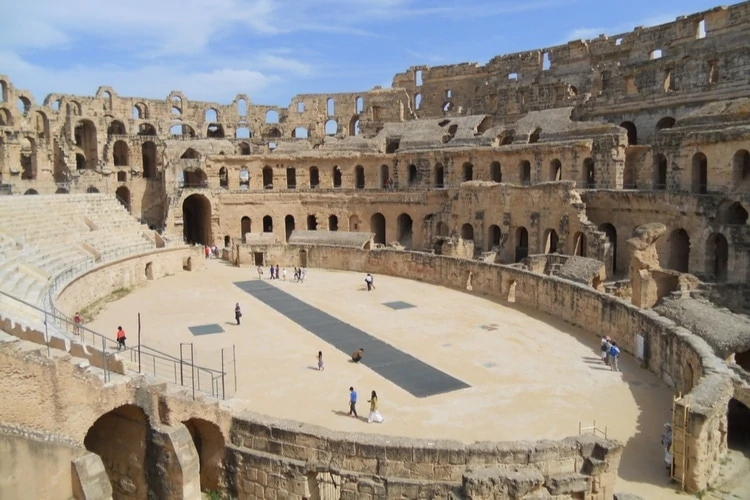
https://www.swedishnomad.com/ -
The island of Djerba ticks all the boxes if you're searching for a picture-perfect beach getaway.
Off the shore, the island village of Houmt Souk is the major focus of interest, with a jumble of whitewashed homes in the old town section. Houmt Souk's shopping is a draw in and of itself, with a plethora of handcraft merchants to browse and haggle with away from the shore.
The island's most popular attraction, though, is the sandy beaches outside of Djerba. The beaches are calm, get-away-from-it-all locations where summer daydreams are formed, pristine and trimmed with date palms.
• Location: Djerba, Tunisia
• Timing: 9AM - 8PM
• Famous for: Djerba Traditional Heritage Museum
• Entry Fee: US$ 6.5
• Best Time To Visit: Summer is the greatest and the most attractive season to visit Djerba since it has a dryer environment. The hottest months of the year are July and August, with temperatures reaching 33°C.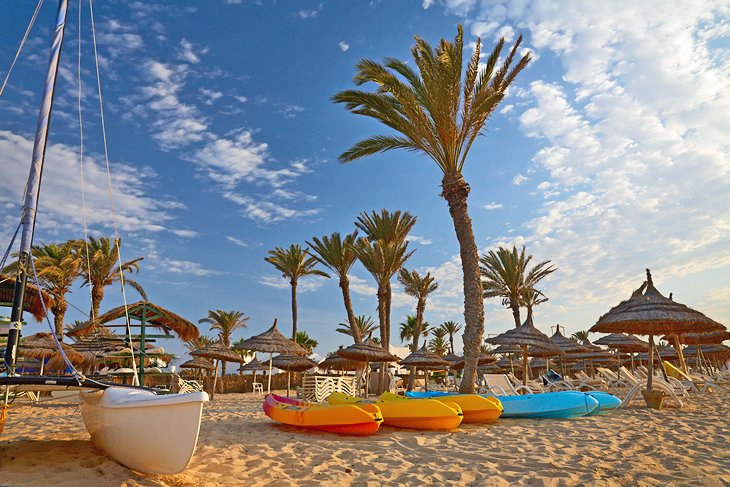
https://www.planetware.com/ 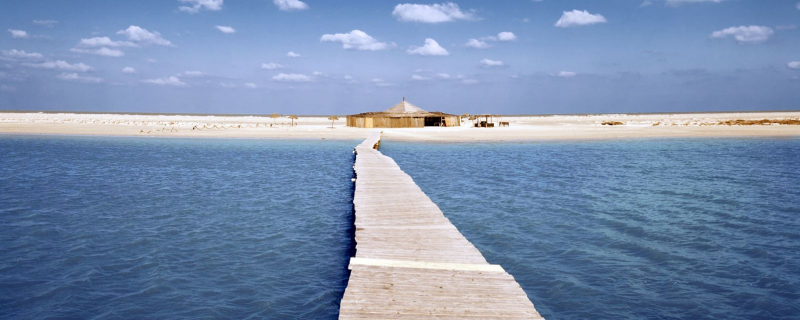
https://www.easyvoyage.co.uk/ -
Carthage, formerly Rome's main adversary, was the maritime Phoenicians' capital, immortalized in the Punic Wars. The evocative remains of this old town now lay by the Mediterranean in Tunis's suburbs, a reminder that even the most powerful cities may be turned to rubble.
The ruins are enormous but dispersed, and if you've been fortunate enough to see well-preserved ancient city sites like Ephesus in Turkey or Volubilis in Morocco, Carthage may appear lackluster at first.
However, these UNESCO World Heritage-listed ruins are historically significant, and any traveler interested in North Africa's ancient history should pay a visit.
Using Tunisian public transportation to go to Carthage from the city center is the most cost-effective option. The TMG light train is quite handy, with many stops catering to various needs.
• Location: Carthago, Tunisia
• Timing: 9AM - 5PM
• Famous for: Its closeness to commercial routes and its beautiful Mediterranean harbor
• Entry Fee: US$ 4
• Best Time To Visit: August, July, and September are the warmest months in Carthage.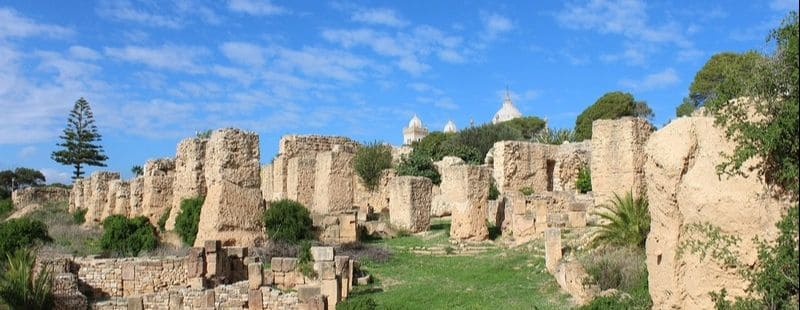
https://www.visatunisia.com/ 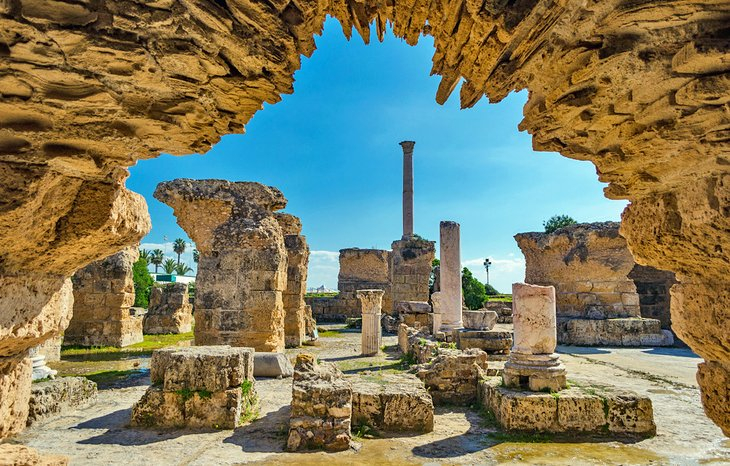
https://www.planetware.com/ -
Even non-museum goers will be wowed by the massive collection of beautiful mosaics on display inside the Bardo. The National Bardo Museum is one of the best museums in North Africa, and it has one of the world's most important mosaic collections, which is wonderfully curated.
It's a demonstration of the spectacular, exquisite creativity of the Roman and Byzantine eras, with artifacts hand-picked from Tunisia's most important archaeological sites. The National Bardo Museum should be high on your to-do list if you just have one day in Tunis, Tunisia's capital.
The Bardo Museum's arrangements were devised with the goal of enlarging and restructuring areas in order to better redistribute and show the collections.
• Location: P7, Tunisia
• Timing: 9AM - 5PM
• Famous for: Tunisia's national Bardo Museum is a national treasure. It is located in a historic Beylic palace from the nineteenth century
• Entry Fee: US$ 25
• Best Time To Visit: Year-round.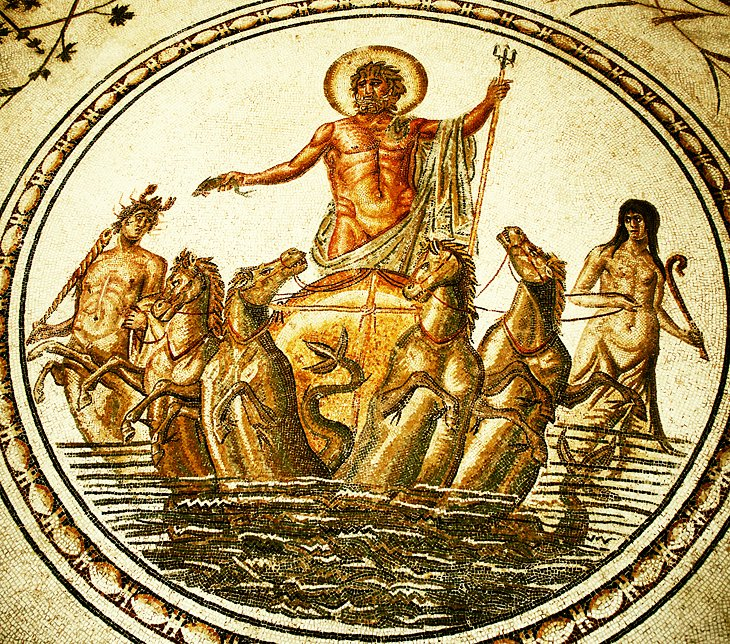
https://www.planetware.com/ 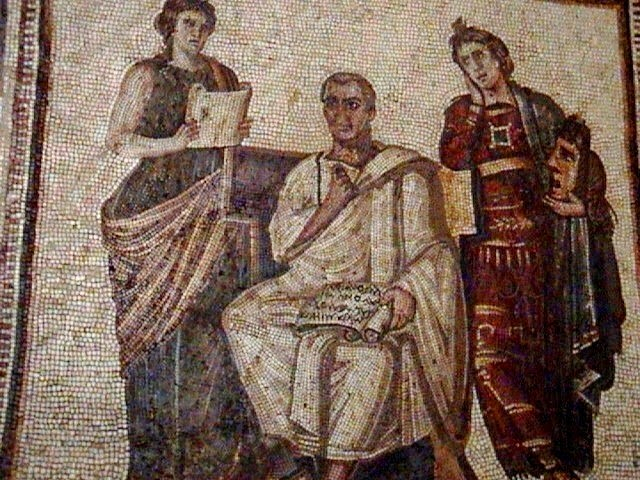
http://www.filonidetaranto.it/ -
Sidi Bou Said is an impossibly tiny and incredibly gorgeous clifftop town that appears to have fallen off an artist's painting.
For decades, artists have praised this little hamlet, which is today a posh neighborhood of Tunisia's capital. The whitewashed lanes, wrought-iron window frames, and bright blue doors are the epitome of Tunisian village architecture, and the Mediterranean background is the icing on the cake.
Sidi Bou Said is a great location to spend a relaxing afternoon taking up the laid-back ambience and perhaps buying at one of the many local artist and crafts vendors.
• Location: Sidi Bou Said, Tunisia
• Timing: Open all day
• Famous for: Sidi Bou Said is Tunis's bohemian beach enclave, consisting with picture-perfect whitewashed homes with wrought-iron balconies.
• Entry Fee: Free
• Best Time To Visit: The months of March, April, and November are the most likely to have excellent weather, with average temperatures ranging from 20 degrees Celsius to 25 degrees Celsius.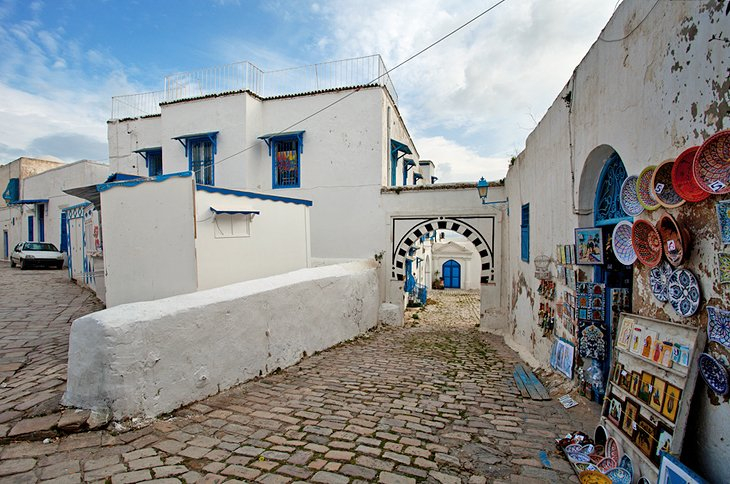
https://www.planetware.com/ 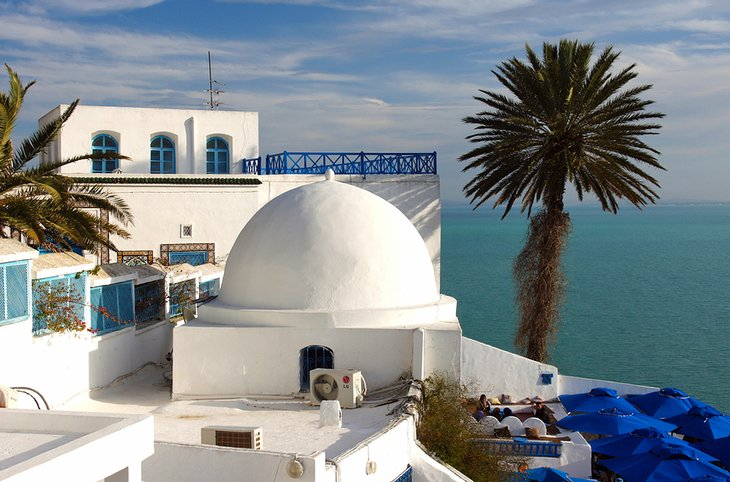
https://www.planetware.com/ -
The huge Sahara desert encompasses much of Tunisia's interior, and the Grand Erg Oriental, an expanse of sand dunes, is the most magnificent part of the desert.
The ever-shifting desert sands have molded these lyrically stunning dunes into a bizarre and lovely landscape of gigantic waves.
For many people, Grand Erg Oriental is an adventure playground where they can ride dune buggies and go on camel treks, but nothing beats sitting atop one of these massive sand dunes and watching the sun set over the Sahara.
The desert village of Douz is the closest settlement, from where you can plan camel, trekking, and 4WD excursions, as well as multi-day treks to the sand dunes.
• Location: Grand Erg Oriental, Tunisia
• Timing: Open all day
• Famous for: In the Sahara Desert, the Grand Erg Oriental is a vast erg or "field of sand dunes."
• Entry Fee: Free
• Best Time To Visit: From March until the beginning of May is the optimum time to visit the Grand Erg Oriental.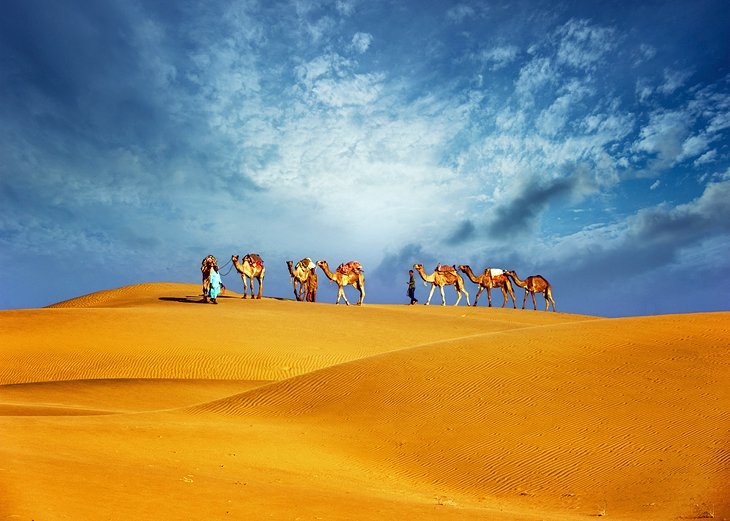
https://www.planetware.com/ 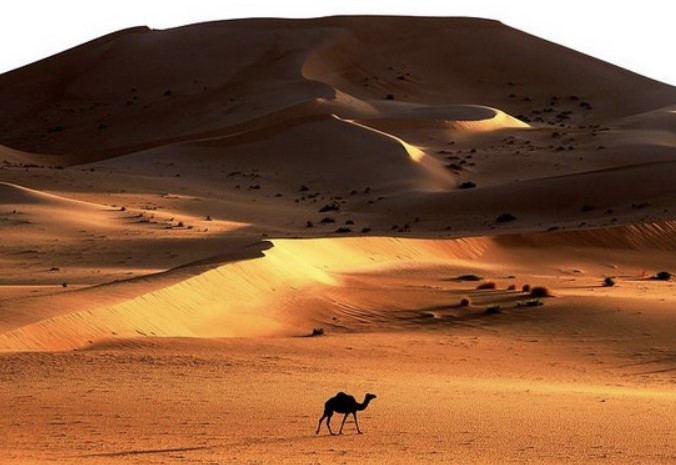
https://www.tunisiatv.com/ -
There are several Roman remains in Tunisia, but Bulla Regia near Tabarka is the most remarkable and intriguing. The Romans here adapted to the hot summer environment by cleverly constructing their villas underground, which has resulted in very beautifully maintained city homes today.
Bulla Regia is a once-in-a-lifetime opportunity for history buffs to walk into authentic Roman homes, with their walls intact and part of the enormous floor mosaics remaining in place. It's a rare insight into the ancient world's household life.
• Location: Bulla Regia, Tunisia
• Timing: 8.30AM to 5.30PM
• Famous for: Bulla Regia, a Roman and Byzantine-era city in northwest Tunisia near the Algerian border known for its subterranean villas, is a remarkable archaeological site that has full, superbly preserved ancient dwellings covered with wall plasters and magnificent mosaic flooring.
• Entry Fee: Free
• Best Time To Visit: The weather is mild all year round, except for the very hot summer, the temperature can be up to 40 degrees Celsius.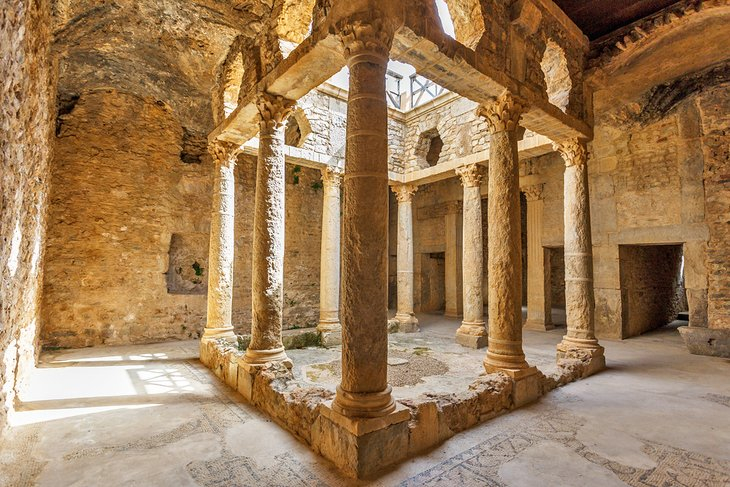
https://www.planetware.com/ 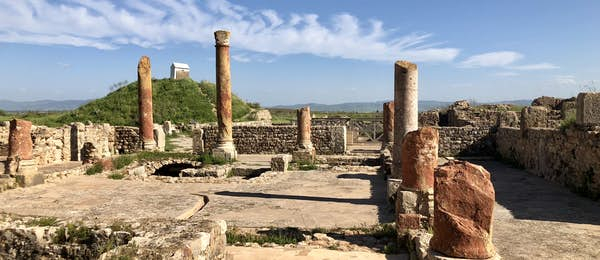
https://www.lonelyplanet.com/ -
As the fourth most significant city for Muslims, Kairouan contains more than its fair share of monuments, including mosques, madrassas, and tombs.
The skyline is full with slim minarets and huge domes, and the Arabic architecture is extremely amazing. However, it's the city's medina's back alleyways that steal the show.
Kairouan's ancient town offers an exquisite, lost-in-time feeling that is a definite highlight of a stay here, with tiny, maze-like streets dotted with decaying colorful cottages.
Kairouan is also a popular shopping location, and its carpets are known for their high quality. When all of the craning your neck at mosque minarets and admiring magnificent tile work becomes too much, it's time to go the souks and haggle with the town's various artisans.
• Location: Tunisia
• Timing: Open all day
• Famous for: the quality of its carpets
• Entry Fee: Free
• Best Time To Visit: If you're searching for the hottest months to visit Kairouan, July, August, and June are your best bets.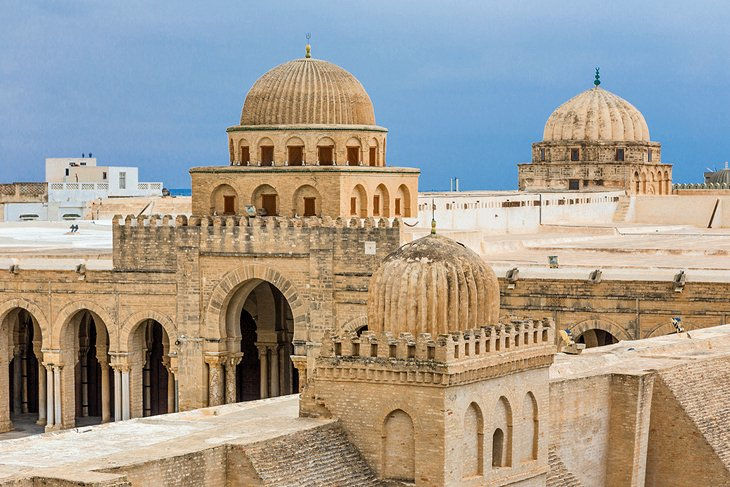
https://www.planetware.com/ 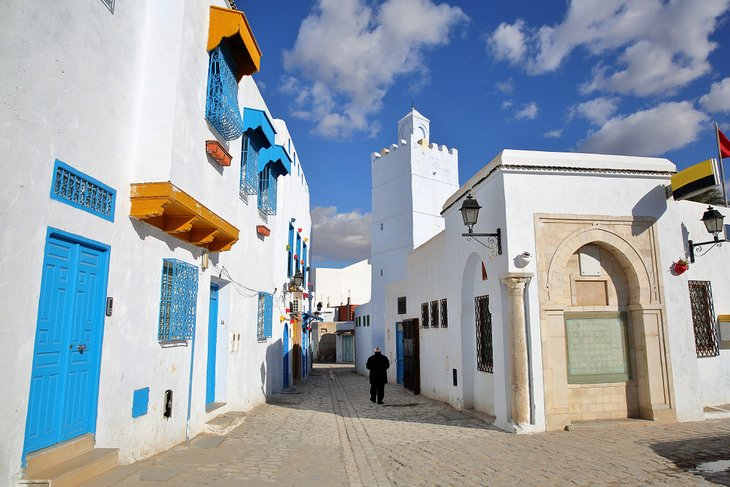
https://www.planetware.com/ -
The Sousse Medina begs to be explored, hidden behind the towering defenses of the Ribat and Kasbah.
This charming old town quarter is a maze of winding streets surrounded by whitewashed buildings, as well as a shopping heaven with a tantalizing array of pottery, leatherwork, and metalwork on exhibit.
The peaceful and meandering back lanes, coated in white and blue, are a beautiful area to dig in and enjoy local life away from the booths along the bustling souk streets.
Sousse's medina (old town) quarter is the city's principal tourist attraction away from the beach. Its original character has been meticulously conserved, and it has been designated as a UNESCO World Heritage Site as one of Tunisia's finest remaining examples of medina architecture.
• Location: Sahel Tunisia
• Timing: Open all day
• Famous for: one of Tunisia's best-preserved examples of medina architecture
• Entry Fee: Free
• Best Time To Visit: Year-round due to ideal weather.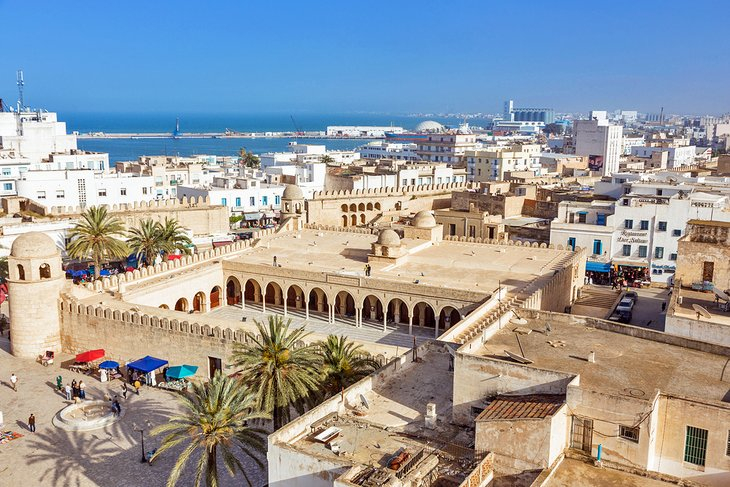
https://www.planetware.com/ 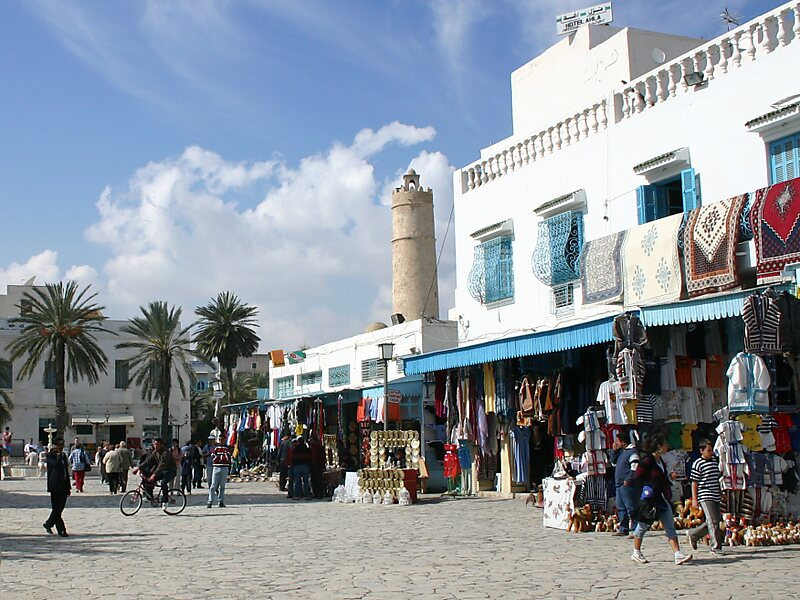
https://travel.sygic.com/ -
This Chott el Djerid (which is best visited on a day trip from the desert town of Tozeur) is a barren and otherworldly spectacle that captivates visitors with its stark and terrible beauty.
The Chott el Djerid's landscape changes depending on the season. In the summer, the Chott el Djerid's moonscape environs are a living fairytale, with shimmering mirages on the horizon and jigsaw puzzle pieces of blindingly white, broken soil underfoot.
During the winter, however, the basin partially fills with water, forming a strange lake in the middle of the bleak desert plains. A visit here demonstrates that nature creates vistas that are far stranger than you could ever conceive.
• Location: Tunisia
• Timing: Open all day
• Famous for: It is known to be the Sahara's largest salt lake.
• Entry Fee: Free
• Best Time To Visit: The best time to visit this site is during the mild spring or fall months, when the weather is most conducive to trekking. The spring season lasts from March to June, while the fall season lasts from September to October.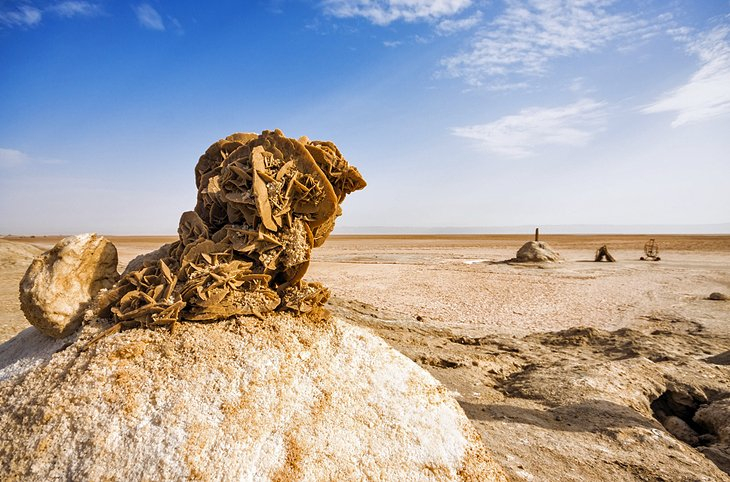
https://www.planetware.com/ 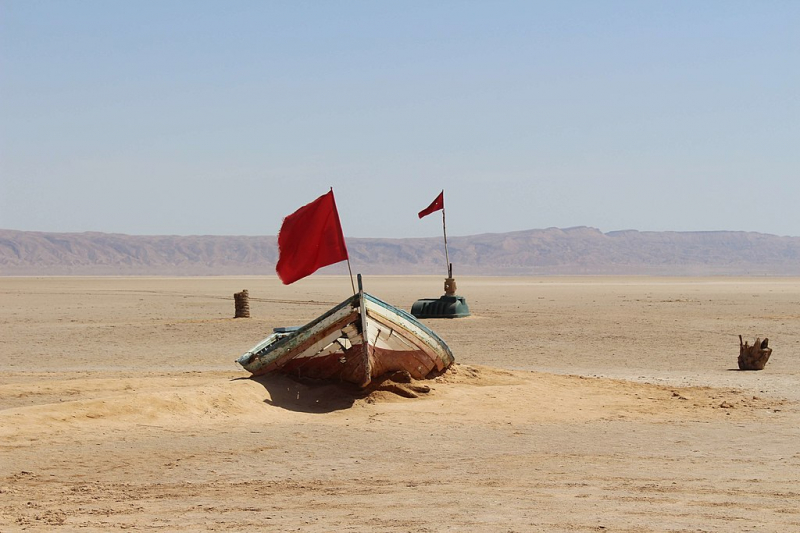
https://en.wikipedia.org/













